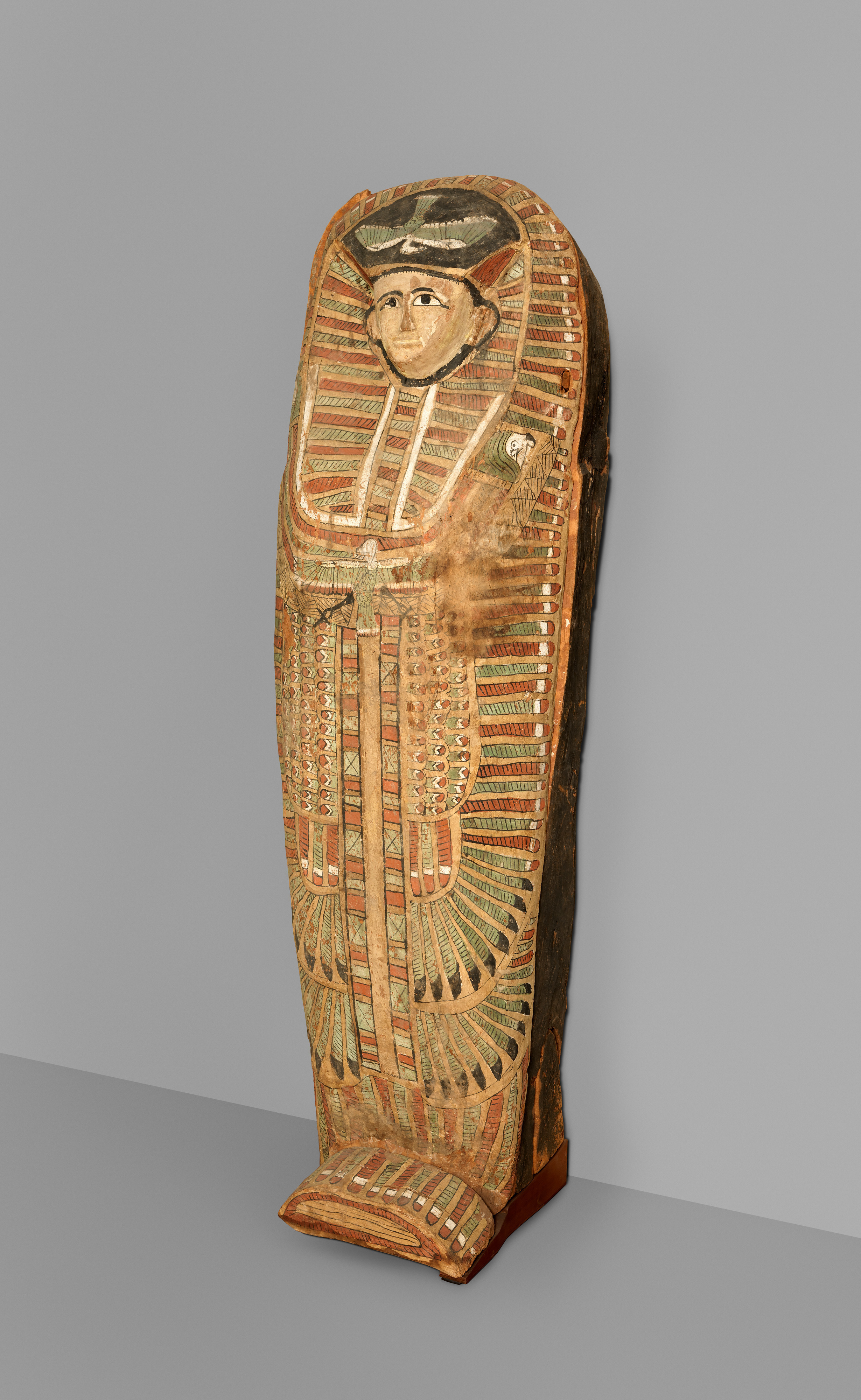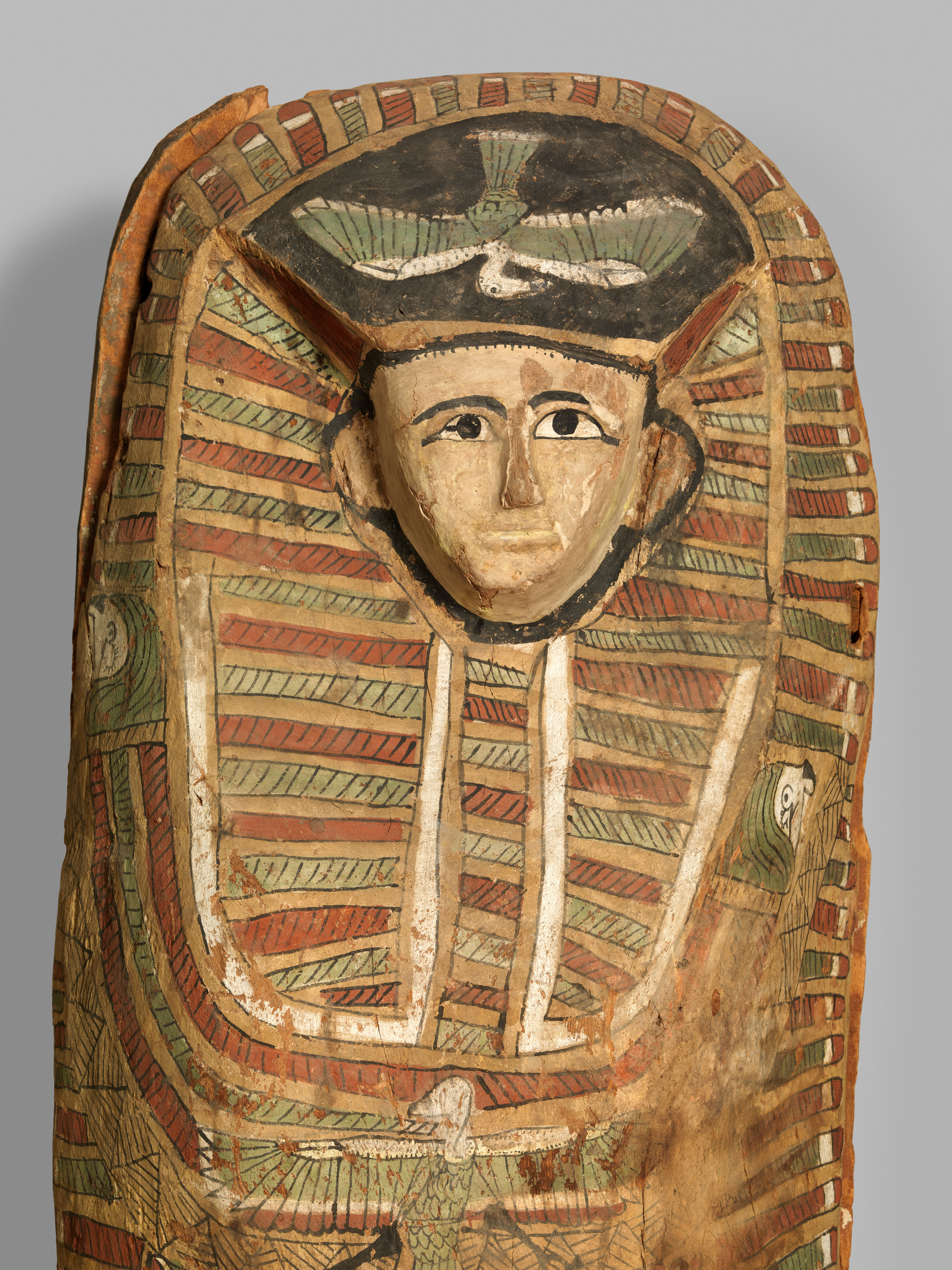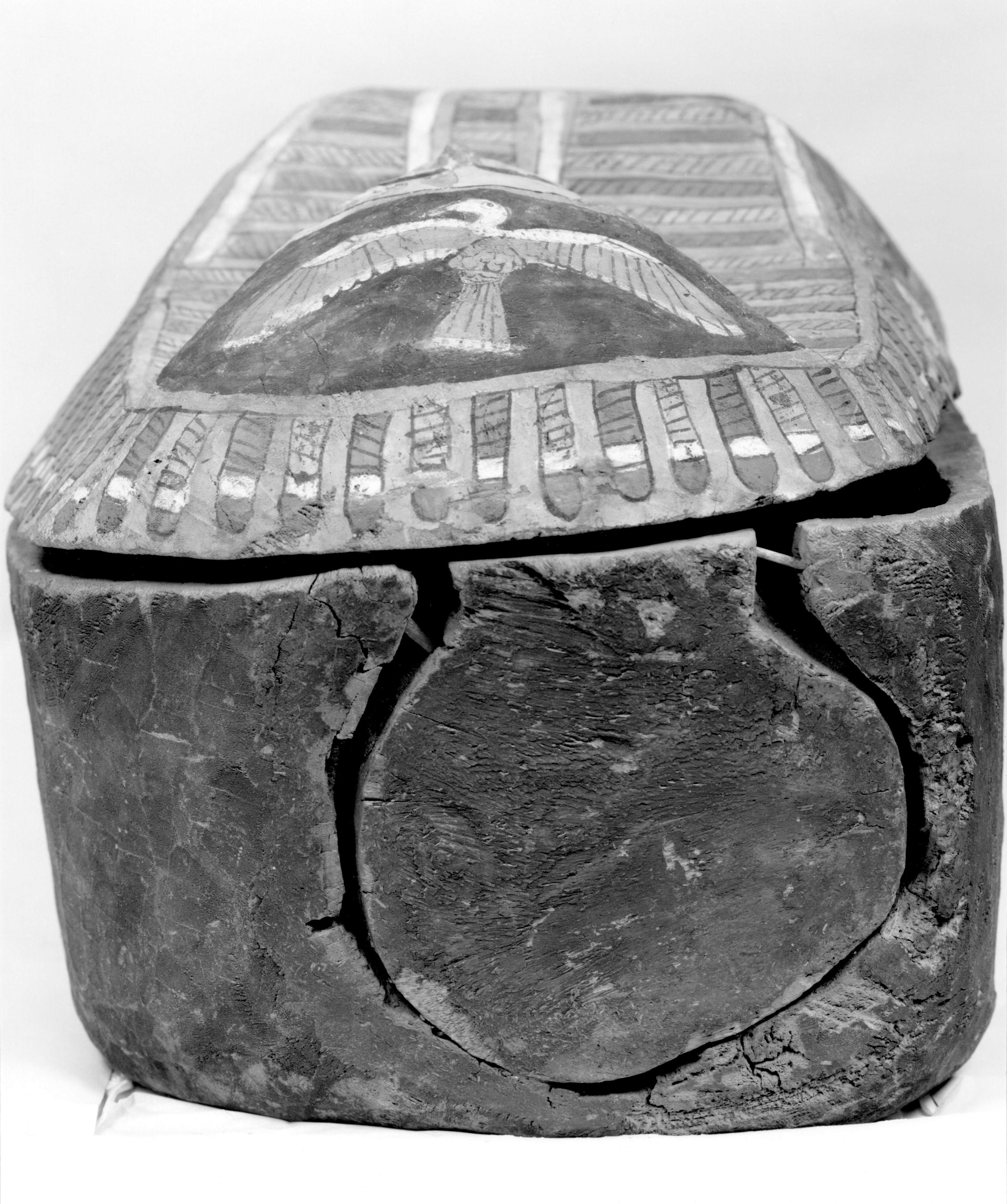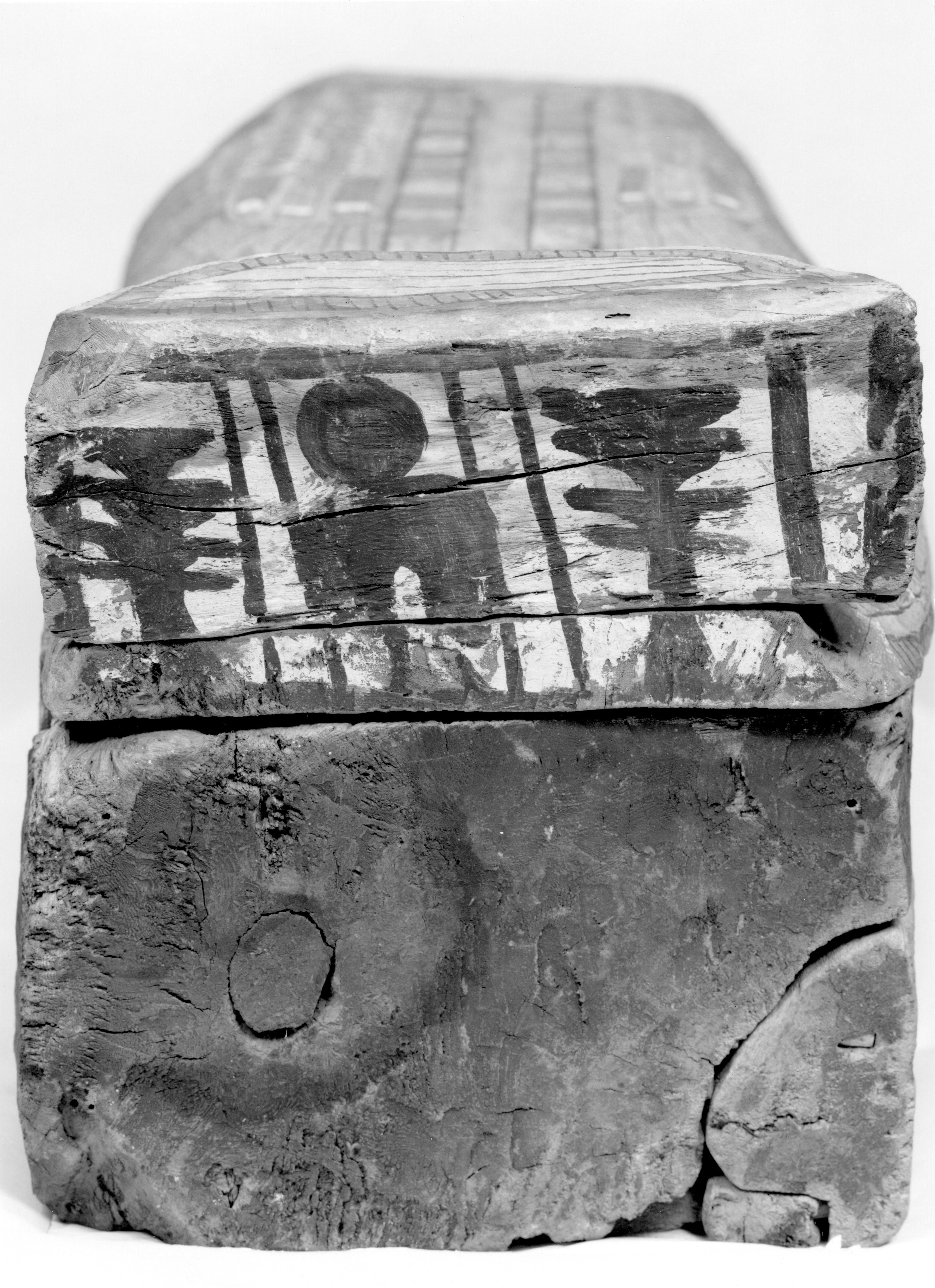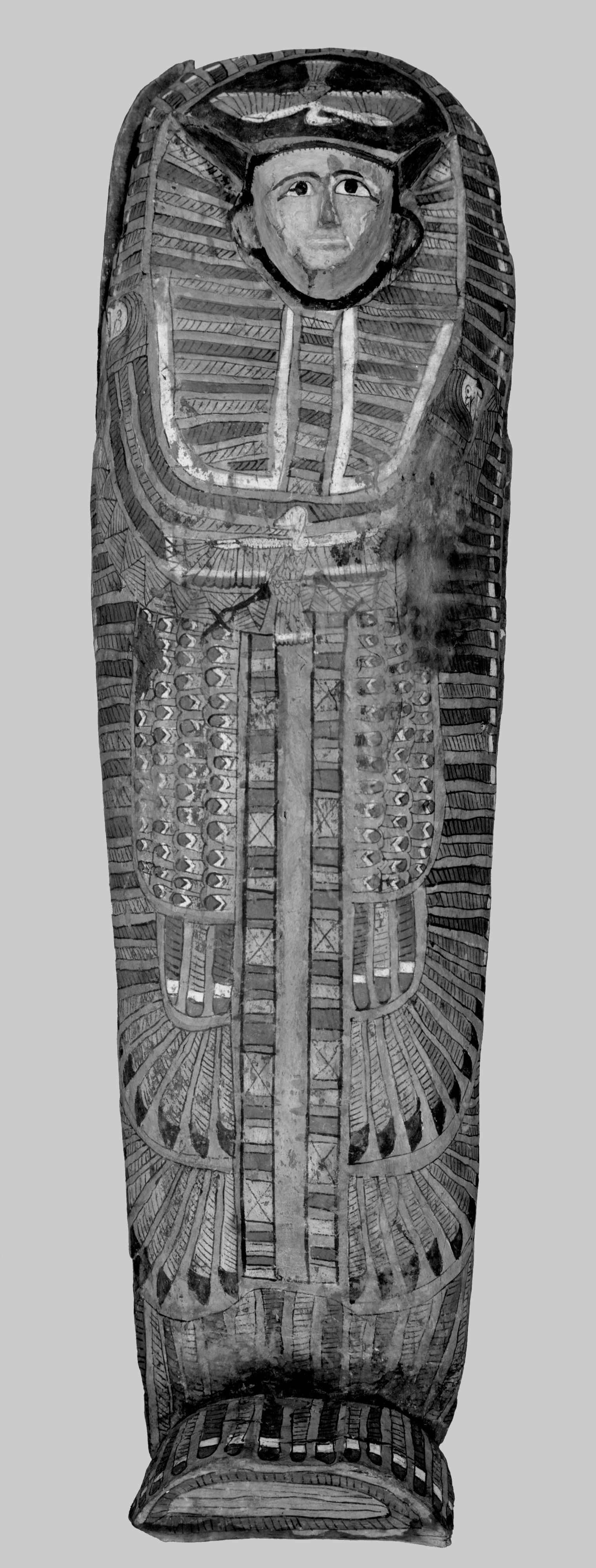Rishi coffin
Second Intermediate Period–Early New Kingdom
Discovered in a rock-cut chamber built off the courtyard of a large Middle Kingdom tomb, this is an example of a rishi coffin, identified as such by the feather pattern painted on the lid. Such coffins appear first in the late Middle Kingdom, and are characteristic of late Dynasty 17 and early Dynasty 18, especially at Thebes.
A royal nemes headdress, painted in reds and greens with black detailing, frames the triangular, crudely modeled and painted face. On the top of the head is a vulture. This usurpation of royal iconography is seen in a number of contexts in the Middle Kingdom and later, and seems to be related to the identification of the deceased with Osiris, king of the dead, and with mortuary rituals. The mummy-like form, which had only recently become common in the late Middle Kingdom, also links this type to mummification. Around the neck of the deceased is a broad festival collar with falcon-head terminals. On top of the collar is a second vulture figure, in this case holding an ankh, the hieroglyph for life, in one talon and a shen ring, symbolizing eternity, in the other. A long vertical band divides the remainder of the lid into two parts. This would in most cases be inscribed with an offering prayer, but here has been left blank. Three types of feathers can be distinguished on the body: short horizontal feathers flanking the vertical band, representing the body feathers of a bird (which could be a falcon, vulture, or hawk); vertical "tail" feathers just below; and two concentric ovals of longer feathers that fan out, creating the effect of wings.
There are a number of theories about the meaning of the feather pattern. One suggestion is that they represent a feathered corselet worn by the king at his coronation. Another is that these feathers associate the deceased with his or her ba, an aspect of the person that could take the form of a human-headed bird. Related to this is a possible association with "Coffin Text" 335, a spell often seen on the lids of rectangular Middle Kingdom coffins. In this text, the ba of Re, here identified as the son of Osiris, unites with the ba of his father to guarantee his rebirth. On the foot of the lid are two djed pillars, symbols of Osiris, flanking a tit knot, associated with his sister-wife Isis.
The exterior of the box is painted black; the interiors of both lid and box were left unpainted. The coffin was carved out of a log. A mass of oily linen was found inside, at the foot end.
Due to rights restrictions, this image cannot be enlarged, viewed at full screen, or downloaded.
This artwork is meant to be viewed from right to left. Scroll left to view more.


